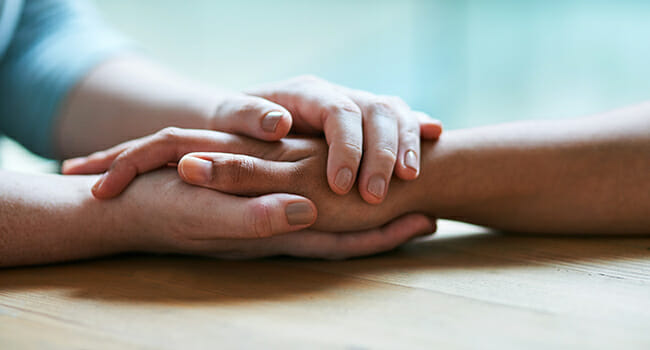How Volunteers Can Support People Facing Depression and Anxiety

May is Mental Health Month, aimed at raising awareness of mental health and helping to fight stigmas – and providing support for the millions of Americans living with mental health conditions. Depression and anxiety are among the most common mood disorders; more than 300 million people in the world suffer from depression and nearly 580 million struggle with anxiety. And in many cases, individuals face symptoms of both at the same time.
Although 1 in 5 U.S. adults will experience a mental health condition in their lifetime, these disorders are still stigmatized. Negative public perceptions of mood disorders can cause those affected to suffer from feelings of alienation and loneliness – often making recovery all the more difficult. In recent history, changemakers have played an important role in changing public perception of mental health disorders and establishing support systems for those who need help.

Clifford Beers, known as the founder of the modern day mental health movement, is one of many changemakers featured on the Points of Light Monument, a one-mile walkway in Washington, D.C., that honors the actions and service of famous Americans who have transformed our nation and the world. Beers courageously shared his own experience with mental illness in his autobiography, “A Mind That Found Itself,” opening the nation’s eyes to the mistreatment of people with mental illness and leading to the creation of modern treatment methods for mental health disorders. His humility, courage and vision lead to the creation of the organization now known as Mental Health America – revolutionizing and changing people’s attitudes and misconceptions regarding mental illness and its proper diagnoses and management.
Today, volunteers still play an important role in supporting those who live with mental health conditions and continuing to fight the stigmas associated with them. Volunteers like Joy Rich, who engages nursing home residents with music and art, which have been proven to help with depression; or Sean Gobin, who created an outdoor therapy program to help fellow veterans suffering from PTSD.
Here are a few ways you can make a difference:
Support an organization that supports mental health
Organizations like the Anxiety and Depression Association of America help patients suffering from mood disorders, and there is a wide array of opportunities to support these organizations. For people who have suffered or are currently suffering from depression or anxiety, you can share your story to let others know that they are not alone. Also, DoSomething.org hosts a collection of campaigns designed to connect volunteers with people who are experiencing mental illnesses.
Answer the phone
Whether it’s a close friend or family member, or someone you’ve never met, you can provide comfort and assistance to someone in distress. The National Suicide Prevention Lifeline has identified 5 action steps proven to help others find hope and support. The organization also operates a network of local crisis centers that rely on dedicated and trained volunteers. Locate your local crisis center to see how you can help.
Be there for someone
Sometimes, just being there for someone can make a world of difference. Because of the enduring stigmas associated with mental illness, many people do not feel comfortable talking to anyone about what they are going through. To Write Love on Her Arms offers several ways to get involved by sharing messages of hope and understanding. And through Make It OK, you can pledge to help erase the stigma and help others talk openly about mental illness.
To find opportunities to get involved in your community, visit All For Good.
